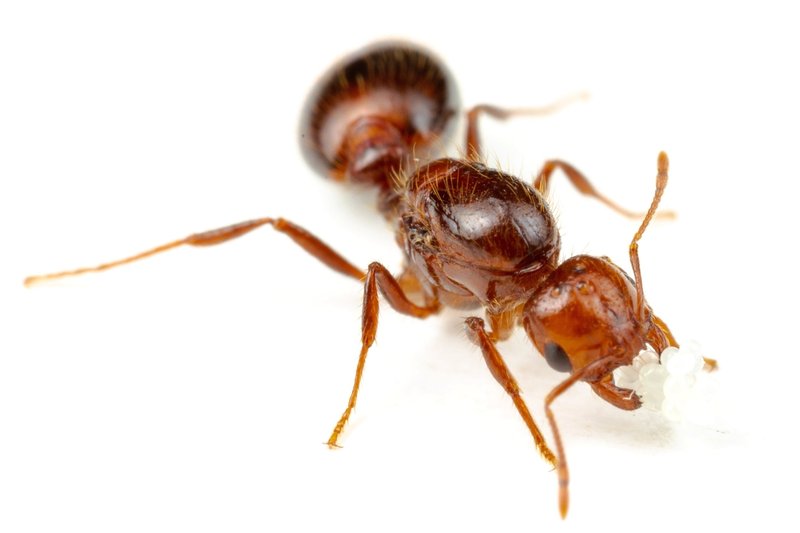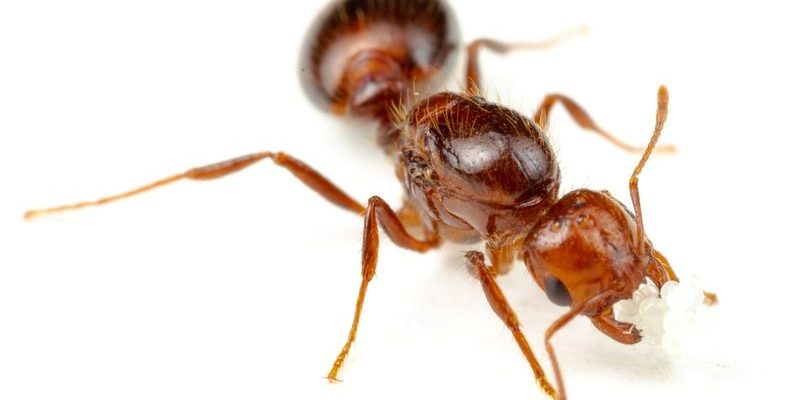
Fire ants belong to the Solenopsis genus, and there are over 285 species of them. They originated in South America but have made their way to various parts of the United States, particularly the southern regions. Many people know them for their painful stings and aggressive behavior when disturbed. However, there’s so much more to uncover about their unique lifestyles, social structures, and even their role in the ecosystem.
1. They’re Named for Their Fiery Sting
One of the first things people mention when discussing fire ants is their painful sting. The name “fire ant” comes from the burning sensation that their sting can cause—it’s not just a clever name! When a fire ant stings, it injects a venomous alkaloid called solenopsin. This venom can cause an immediate burning sensation, often followed by redness and itching.
You might be wondering how a tiny ant can deliver such a punch. Their sting is used for both defense and predation. When they feel threatened, a swarm of fire ants may easily target a single threat, working together in a coordinated attack that can lead to multiple stings. Trust me, it doesn’t take much to provoke them; even stepping too close to their nest can trigger their protective instincts.
2. They Live in Complex Societies
Fire ants are not solitary creatures; they live in large colonies that can consist of thousands to millions of individuals. Each nest has a social structure that functions much like a small city. Within the colony, you’ll find workers, soldiers, and reproductive ants, each with its own role.
The worker ants perform a variety of tasks, including foraging for food, caring for the queen’s young, and defending the colony. The soldier ants are larger and are tasked with protecting the nest from threats. Meanwhile, the reproductive ants, which include the queen and males, are responsible for creating new colonies. Isn’t it incredible how such small creatures can have such intricate social dynamics?
3. They Can Form Rafts During Floods
Have you ever seen a bunch of fire ants floating on water? It sounds crazy, but they have a remarkable ability to survive floods by forming rafts! When faced with rising water, fire ants instinctively link their bodies together, creating a buoyant mass that can float for long distances.
This adaptation is crucial for their survival during floods, allowing them to escape drowning and reach dry land. It’s like a mini life raft made of ants! This behavior showcases their teamwork and how they rely on one another for survival.
4. Fire Ants Are Great Foragers
Fire ants are excellent foragers, which means they’re very good at finding food. They are omnivorous and will eat just about anything, from seeds and nectar to small insects or even other ants. This diverse diet helps them quickly adapt to their environment.
In fact, if you’ve ever spotted a trail of ants marching in a line, that’s likely fire ants on the hunt for food! They communicate with each other using pheromones and will leave a scent trail to lead their fellow workers to food sources. This system makes them highly efficient scavengers.
5. Their Queens Can Live for Years
While worker fire ants may only live for a few months, their queens have a much longer life span. In some cases, a queen can live for over seven years! This longevity is crucial for the colony as it allows for continuous reproduction.
A single queen can lay thousands of eggs daily, ensuring that the colony grows rapidly. This impressive reproductive capability is one reason fire ants can become such a nuisance when they invade an area.
6. They Can Be Aggressive Defenders
If you’ve ever come too close to a fire ant mound, you know they can be aggressive when defending their home. Fire ants often take collective action when their nest is disturbed. A few ants may scout the area first, but if they sense danger, they’ll quickly alert others to join the defense.
Interestingly, when a fire ant stings, it also emits a pheromone signal that attracts other ants to help in the attack. This is why you might find yourself being swarmed if they feel threatened. It’s a survival tactic that has helped them thrive in various environments.
7. They Can Adapt to Their Environment
Fire ants are incredibly adaptable insects. They can thrive in various environments, from grassy fields to urban areas. Their ability to adjust to different conditions has allowed them to spread and establish colonies in new regions.
For instance, in colder climates, fire ants can even enter a dormant state to survive harsh winter conditions. This adaptability has made them a successful invasive species in many parts of the world, often outcompeting native ant populations.
8. Fire Ants Use Their Bodies to Create Barriers
When faced with threats like floods or intruders, fire ants demonstrate remarkable engineering skills. They can create floating barriers by intertwining their bodies, effectively forming a wall that protects their queen and the larvae.
This selfless behavior highlights the strong sense of community within the colony. It’s not just about survival for the individual; it’s about ensuring the entire colony’s safety.
9. They Are Both Beneficial and Harmful
While fire ants are often viewed as pests, they play a unique role in their ecosystems. They help aerate the soil, control pest populations, and even contribute to the decomposition of organic matter. However, their aggressive nature and painful sting can make them a nuisance in gardens and backyards.
Managing fire ant populations requires a balanced approach. Homeowners may use various methods to control them, but it’s essential to consider their environmental impact before taking action.
10. Their Sting Can Even Cause Allergic Reactions
You might think that a sting from a little ant wouldn’t lead to serious health issues, but for some individuals, it can cause severe allergic reactions. In rare cases, people may experience anaphylaxis, a life-threatening condition requiring immediate medical attention.
If you’re sensitive to insect stings, it’s essential to be cautious around fire ants and know how to treat their stings. Over-the-counter antihistamines can help alleviate minor reactions, but always consult a doctor if you experience severe symptoms.
In conclusion, fire ants are more than just bothersome insects. They have fascinating behaviors and social structures that contribute to their success as a species. Understanding them can help us live alongside these small yet mighty creatures more harmoniously. Next time you spot one, remember there’s a whole world of activity happening beneath your feet!

